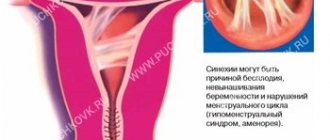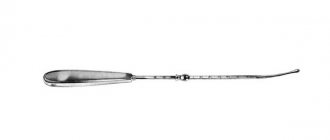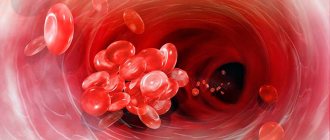Is uterine endometriosis in a general sense a pathological process? during which there is a proliferation of cells morphologically identical to the cells of the uterus beyond the normal anatomical position. As practice shows, cells of this kind are found in the lungs, bladder, intestines, vagina, and ovaries. Also in other anatomical structures.
Nodular endometriosis is a type of disease. Unlike other forms, nodular endometriosis of the uterus is characterized by dense accumulations of cells in relatively small areas. These, as the name suggests, are so-called endometrial nodes.
Reasons for the development of the disease
Diffuse endometriosis, or adenomyosis, is one of the forms of the pathological process in which benign growth of muscle tissue occurs, with properties similar to the layer lining the internal cavity of the uterus.
This disease was first diagnosed and described in the mid-19th century, but since then scientists have not been able to find out the exact cause of the development of endometriosis. According to statistics, previously the disease was diagnosed in women aged 30-50 years, but in recent decades it has also been recorded in patients 20-25 years old. Various theories have been put forward as probable causes of the disease, but they have not been confirmed.
Modern medicine lists the following as the causes and provoking factors of endometriosis:
- the phenomenon of retrograde menstruation, when part of the menstrual blood containing endometrial particles enters the depths of the uterus, into the tubes and even the abdominal cavity; cells are fixed randomly in a non-standard place, where the endometrium subsequently grows;
- various interventions in the uterine cavity during abortion, miscarriage, any procedures and operations (laparoscopy, cesarean section, removal of polyps, etc.), after which scars remain, and epithelial cells begin to multiply in their place;
- disturbances in the functioning of the endocrine and immune systems;
- hormonal disruptions in the functioning of various glands;
- mental and physical stress, stressful situations;
- hereditary factor.
What is internal endometriosis?
There are genital and extragenital endometriosis. Genital spreads to the genitals, and extragenital affects organs outside the reproductive system, such as the intestines or navel.
This article will talk specifically about the genital form of endometriosis, or internal.
Endometriosis of the uterine body is called adenomyosis; according to the ICD-10 classification, the disease is assigned code N80.0.
Adenomyosis develops due to invasion of endometrial tissue into the myometrium, the muscular lining of the uterus. Endometriosis is an estrogen-dependent disease and therefore primarily affects women of reproductive age.
In a large study of women complaining of chronic pelvic pain, 45% were diagnosed with endometriosis during laparoscopy. The incidence of endometriosis increased by 12% at the age of 11-13 years and reached 45% in women 20-21 years old. The hereditary factor must be taken into account when collecting anamnesis from a patient with suspected endometriosis. The presence of this pathology in close relatives increases the risk of development by 10 times, compared with patients who did not have the disease in their family.
Characteristic symptoms
A distinctive feature that makes early diagnosis of the disease difficult is the asymptomatic period.
With the further development of diffuse endometriosis, the following symptoms are possible:
- premenstrual and pain during menstruation;
- heavy bleeding during menstruation;
- pain in the pelvic area, which begins 1-2 days in advance and increases by the 3rd day of menstruation;
- spotting and spotting between periods;
- the feeling of discomfort and pain during sexual activity is associated with the spread of the lesion to the cervix;
- the expected pregnancy does not occur for a long time;
- Violation of the monthly cycle - occurs more often in situations where the cause of the disease is hormonal imbalances.
There is a focal form of diffuse endometriosis, in which the pathological process develops unevenly. Small lesions form on the body of the uterus, penetrating to some depth.
Treatment for this form is quite simple, but its manifestations are more unpleasant: if the node is poorly positioned due to compression, tissue may grow, causing increased bleeding and pain.
Stages
In total, there are 4 stages of development of nodular type endometriosis. Among them the following stand out:
- Stage 1 of the pathological process. Single, small foci of endometriosis are observed in the uterus. Visually, they are identified as small knob-shaped or cystic-solid structures. They may look like polyps and have a small stalk. However, this is rather an exception to the rule. The process has not yet spread beyond the uterus.
- Stage 2 of the pathology. Foci of endometriosis grow through the functional layer of the mucous membrane and reach the basal layer. They become larger in diameter. This is a much more dangerous process. Urgent treatment is required.
- Stage 3 of the disease. Deeper germination of endometrial cells develops. Cystic or solid-cystic formations form on the ovaries. Single adhesions in the abdominal cavity are possible (happens often).
- Stage 4. It is almost impossible to respond to even radical therapy. Multiple nodular lesions form in distant organs, including the intestines and vagina.
The disease must be treated in a timely manner. This is the only way to count on a positive outcome.
Disease severity
The proliferation of endometrial cells and their distribution in the body of the uterus occurs gradually; there are 4 stages of development of endometriosis:
- At first, when endometrial particles pass into the muscle tissue to a depth of 1 cm, there may not be any negative sensations, but over time, the duration of menstruation and discomfort during it may increase.
- At stage 2, the lesion reaches the middle of the myometrium, which is manifested by increased pain, the appearance of swelling, and possible bleeding in the middle of the menstrual cycle.
- At the next stage, through cell germination occurs and damage to the fallopian tubes, cervix, ovaries, vagina and even the walls of the peritoneum begins.
- At the last stage, the pathology spreads to neighboring organs of the genitourinary system and intestines.
In most patients with grade 2-3 disease, adenomyosis occurs, i.e. proliferation of muscle tissue cells around foci of endometriosis. Hemorrhages and swelling occur in the affected connective tissue, which can have a negative impact during pregnancy.
Degrees and classification of endometriosis: internal and external, differences in diffuse form
Among gynecological diseases, endometriosis is in third place in terms of prevalence after uterine fibroids and inflammation.
After the onset of endometriosis in women, changes in the reproductive system of the functional and structural plan begin to occur, while the psycho-emotional state greatly deteriorates.
Such consequences are detrimental to normal life.
In our article we will look at the types of endometriosis of the uterine body, talk about the differences between the internal and external forms of the disease, and its diffuse form.
Description of the disease
Depending on where the foci of the disease are localized, its manifestations occur.
Based on this symptom, forms of internal and external endometriosis are distinguished:
- genital;
- extragenital.
In the first case, the spread of the disease occurs on the tissue structures of the woman’s reproductive system.
In the second, localization occurs outside the reproductive organ system.
Genital endometriosis has a more detailed classification, which includes 3 forms:
| Form | Description |
| Peritogenital | With this form, the ovaries, pelvic peritoneum, and fallopian tubes are affected. |
| Extraperitogenital | Typical distribution is the external genitalia, cervix, vagina, rectovaginal septum, etc. |
| Internal | Development of internal endometriosis takes place in the muscular structures of the uterus. In this case, the uterus takes on a spherical shape and increases in size. |
The extragenital form of endometriosis affects the navel, intestines, lungs, kidneys, and postoperative scars. A mixed form of the disease occurs in the case of an advanced stage of endometriosis.
There are four degrees of the disease , which are distinguished based on how deep the lesion is:
- I degree - the disease is superficial, and localization is isolated;
- II degree - characterized by lesions with deeper penetration into the tissue, their number is greater than in the previous case;
- III degree - focal manifestations of the disease penetrate to a great depth into the tissue, the number of localization sites is extensive, the appearance of cysts is observed on two ovaries;
- IV degree - many deep places of endometriosis, bilateral cysts on the ovaries, a large number of specks in the vagina and intestines. The spread is extensive, the symptoms are clearly expressed, and it is very difficult to cure this stage of the disease.
Symptoms and signs
Endometriosis occurs in a variety of ways and depends on the severity. In the initial stages of the disease, there are no symptoms that can be accurately attributed only to this disease.
But at a later stage of development there are such signs of the disease:
- pelvic pain;
- dysmenorrhea - menstruation accompanied by severe pain;
- Unbearable pain occurs during sexual intercourse. This symptom is typical for lesions of the vagina, the wall of the rectovaginal septum, the sacrouterine ligaments, and the uterine-intestinal space;
- pain during urination and defecation;
- menstruation lasts unnaturally for a very long time, characterized by heavy discharge;
- posthemorrhagic anemia begins to develop. This symptom is mainly observed in case of large blood loss during menstruation. This causes weakness, drowsiness, fatigue, and dizziness.
Endometriosis should be suspected if there are manifestations on several points.
Treatment methods
Treatment options are selected based on the following factors:
- woman's age;
- number of pregnancies;
- number of births;
- area of distribution of outbreaks and their extent;
- the presence of other types of pathologies.
Among the methods used to treat the disease:
- medicinal;
- surgical - the focus of the disease itself is removed, while preserving the organ;
- surgical radical - removal of the entire organ in which the lesions are localized;
- combined.
Treatment methods for endometriosis are aimed not only at eliminating the disease, but also at getting rid of its consequences.
Drug therapy is used in the case of a young patient , absence of severe symptoms, premenopause and the need to preserve or restore reproductive function.
If internal or external endometriosis is grade 1 or 2, then using drugs containing hormones, a simulation of the cessation of menstruation is performed.
This method can provoke spontaneous atrophy of the disease foci.
There are many side effects with this method, and after stopping the course of taking hormonal drugs, the disease tends to relapse.
Despite the effectiveness of drug treatment, surgical methods are considered more effective.
There are several groups of drugs used in the conservative method.
| Group of drugs | Description |
| Combined estrogen-progestogen | The action of the drugs is aimed at suppressing the production of estrogen and stopping ovulation. Applicable at the earliest stages of development and are not effective in the case of extensive localization of lesions. Side effects include nausea, vomiting, bleeding between menstruation, and pain in the mammary glands. |
| Progestogens (norethisterone, progesterone, gestrinone, dydrogesterone). | They are used regardless of the stage of the disease, the course is at least six months and must be completed without interruptions. Taking the drugs causes bleeding between periods, depression and pain in the mammary glands. |
| Antigonadotropes | Aimed at suppressing the production of gonadotropin. Reception is carried out without interruption for at least six months. The use of the product is prohibited in case of increased levels of androgenic hormones. |
| Gonadotropin releasing hormone agonists (triptorelin, goserelin) | They inhibit the production of estrogen, stop ovulation, which leads to a slowdown in the development of focal manifestations of the disease. The convenience of taking these medications is that you can take them once over several months. |
In addition to the listed groups, drugs with immunomodulatory, antispasmodic, analgesic and anti-inflammatory effects may be involved in treatment.
Surgical methods are used in cases of moderate or severe stage of the disease , the ineffectiveness of drug treatment or the impossibility of its use, as well as the size of the lesion exceeding 3 cm.
A radical method of surgical intervention is applicable to patients over 40 years of age and only in cases of obvious progression of endometriosis.
This method is required for 12% of sick women to be cured. The method of performing operations is laparoscopic or laparotomy .
Considering the frequency of relapses, in many cases it is impossible to do without repeated surgery. According to statistics, relapses occur in 15-40% of women.
We’ll talk to a specialist about the causes of endometriosis and its forms in the following video:
Diffuse form
All types of intrauterine endometriosis are widespread and are characterized by focal damage to organ tissue.
In the case of diffuse type endometriosis, the development of the disease is different, which is the great danger of the disease.
Diffuse is characterized by sequential and continuous distribution. Over time, the lesion covers the entire uterus.
In most situations, sexual function cannot be brought back to normal functioning.
Endometriosis is a fairly serious disease that greatly affects a woman’s body.
We can talk about a cure and a favorable prognosis only if the disease is detected in a timely manner and the correct measures are taken to get rid of endometriosis.
Source: //beautyladi.ru/klassifikaciya-endometrioza/
Symptoms
The most common form of internal endometriosis is diffuse; it can also be of the nodular type, which is characterized by the appearance of nodular formations on the surface of the uterus. These neoplasms can spread to surrounding tissues. Treatment for this type of disease is only surgical, otherwise extensive damage occurs not only to the uterus, but also to other organs of the pelvis and abdominal cavity.
Diffuse endometriosis of the uterine body occurs in 3 stages:
- The first endometrial tissue is affected to a depth of 10 mm. Symptoms are absent or mild. Rarely, women report increased bleeding during menstruation and additional discomfort.
- On the second, endometrial cells grow to the middle of the myometrium. Pain appears, intensifying during menstruation, and tissue swelling occurs. Possible consequences in the form of uterine prolapse and persistent pain. Between cycles, bleeding appears.
- In the third, the endometrium begins to affect the fallopian tubes, vagina, and cervix. Symptoms intensify, and other pathologies appear.
Diagnostics
Often women turn to a specialist only when characteristic pain and discharge appear during the intermenstrual period. In addition to external examination and palpation, to make a diagnosis it is necessary to undergo other examinations:
- Ultrasound examination using transvaginal sensors, carried out on days 23-25 of the monthly cycle, allows one to determine general echographic signs of adenomyosis in 90% of cases: detect an increase in the anteroposterior size of the uterus and areas of increased echogenicity in the myometrium;
- conducting X-ray hysterosalpingography, which shows an increase in the area of the cavity, deformation and uneven edges of the contour, the information content of such a study is 85%;
- magnetic resonance or computed tomography;
- endoscopic examination of the uterus, which is carried out with a special camera inserted into the vagina: when the image is transmitted to the monitor, the gynecologist examines the walls and takes tissue samples.
The course of treatment for the patient is selected after her complete examination.
Treatment methods
The doctor prescribes drug therapy only for the active form of endometriosis, which is manifested by pain and bleeding. Treating the inactive stage of the disease can help it develop and spread.
The main component of therapy is the use of hormonal drugs, which suppress the production of estrogens, female hormones. The gynecologist uses two- or three-phase contraceptives for conservative therapy. Patients often have concomitant diseases of the endocrine system: diabetes, obesity and others, which need to be corrected in parallel.
The treatment process is always long, but it gives a chance to restore the patient’s reproductive function without the use of surgical methods.
Under the influence of hormonal medications, the patient experiences artificial menopause for a period of up to 6 months, during which the abnormal growth of the endometrium stops. During this period, the body, with the support of various medications to enhance immune defense, must itself cope with the pathological proliferation of cells in the tissues of the uterus.
Benefits of hormonal treatment:
- such therapy helps stabilize hormonal levels and maintain them under medical supervision;
- endometrial tissues obey the cyclicity of the menstrual cycle, being in a calm state throughout the entire period and becoming active during menstruation, so stopping this process allows the cells to enter a state of rest;
- if the form of the disease is non-nodal, then the body copes with the foci on its own;
- if the disease does not go away within six months, then treatment is continued for a longer period, but this increases the risk of harm to the female body, which is in reproductive age.
For patients with endometriosis, the doctor prescribes additional medications:
- anti-inflammatory therapy is used to relieve pain: non-steroidal drugs (Brufen, Flugalin, Indomethacin), antispasmodics and analgesics (Baralgin, No-Shpa, Analgin, etc.);
- vitamin E, Ascorbic acid, Pycnogenol, etc.;
- neurological manifestations help relieve sedative medications;
- iron-containing preparations.
After completing the course of hormone therapy, menstruation normalizes, pain decreases, and in most women, reproductive function is completely restored.
How to cure diffuse endometriosis?
Diffuse endometriosis of the uterine body is a gynecological disease in which the endometrial layer grows and penetrates the myometrium. This pathology is very often the cause of female infertility, so you need to know what diffuse endometriosis is, what symptoms it may have and how the treatment proceeds.
What are the differences between the different forms of endometriosis?
In the medical classification, there are 3 main forms of this disease.
- The diffuse form is the most common in practice. When it occurs, the myometrial layer is damaged at the cellular level, while the pathogenic cells spread evenly.
- The internal form of nodular endometriosis is extremely rare. In this case, nodules form on the surface of the uterus. Most often, with this form, surgical treatment is prescribed, in which the foci of the disease are cauterized.
- Genital or external form. This includes all cases of manifestation of endometriosis on the organs of the reproductive system, excluding the uterus. It is most often found on the fallopian tubes and ovaries.
Causes of the disease
The appearance of internal diffuse and focal endometriosis of the uterus is practically impossible without endocrine or hormonal disorders in the body. When hormonal levels are disrupted, the body begins to produce excessive amounts of a hormone such as estrogen.
This, in turn, contributes to the growth of the endometrium in the first half of the menstrual cycle. During menstruation, the endometrium is shed and removed from the body, which is accompanied by heavy bleeding. But not all of the endometrium is excreted; part of it enters the myometrium through the blood vessels and begins to grow there.
In the diffuse form that has developed from internal endometriosis, uniform thickening is observed in the body of the uterus. The thickness of such a thickening can reach 4–5 centimeters. And according to the depth of penetration of the endometrium into the myometrium, several degrees of the disease are distinguished.
- First degree - the endometrium has practically not penetrated into the myometrium, the lesion is superficial, no more than 1 cm deep.
- Second degree - penetration occurred approximately to the middle of the myometrium, with the possible development of uterine edema.
- The third degree is complete damage to the myometrium, up to the serous membrane.
Once in the myometrium, endometrial cells continue to perform their functions, which leads to internal hemorrhages, swelling and other unpleasant symptoms.
Symptoms of diffuse endometriosis
Very often this disease remains undiagnosed for a long time. After all, the main symptom of the diffuse form of endometriosis of the uterine body is heavy bleeding during menstruation. But the same bleeding can occur with other problems in the body, for example, with a common cold or a sudden change in climate.
Read more about periods with endometriosis >>
In the later stages of the disease, a woman may notice spotting between menstruation, a pulling sensation in the lower abdomen, and pain during sexual intercourse. Also, some women have problems conceiving.
Diagnosis of diffuse endometriosis
If diffuse endometriosis of the uterus has grown to grade 3, it can be detected during a visual gynecological examination. The nodular form with large foci can also be seen without the help of special diagnostics.
If, during the examination, the doctor did not find anything, and the woman has heavy bleeding, then ultrasound diagnostics (ultrasound) using a vaginal sensor is prescribed.
If endometriosis is grade 1 or 2, then methods such as hysteroscopy, fluoroscopy, computed tomography or magnetic resonance imaging can be used for diagnosis.
Treatment of diffuse endometriosis
Both diffuse and nodular endometriosis of the uterus are recommended to be treated only if pain is present.
It is believed that with an inactive form of the disease, therapeutic procedures can play the role of a catalyst and provoke a transition to an active form.
The set of procedures for treating internal forms includes:
- correction of hormonal levels, in particular – reducing the production of the hormone estrogen;
- restoration of the immune system;
- removal of inflammation in the affected areas;
- treatment of concomitant diseases, such as diabetes, obesity and others.
This set of procedures helps to induce artificial menopause in the patient for a certain period of time (usually about six months), during which the growth of the endometrium completely stops.
After treatment is completed, the menstrual cycle normalizes and reproductive function is restored. The earlier such therapy begins, the greater the woman’s chance of conceiving and bearing a healthy child.
Perhaps the only disadvantage of conservative therapy is that this process is long, even in the early stages of the disease.
If conservative therapy is ineffective, then surgical intervention is performed. In its process, the doctor removes the body of the uterus (and in the nodular form, cauterization of the affected areas is possible). This operation is most often prescribed to women past childbearing age.
About the cauterization procedure for endometriosis >>
With focal diffuse endometriosis, it is easier to treat, because the disease does not spread evenly in the myometrium, but forms foci that are easily noticeable. The doctor sees such lesions well and can remove only them, leaving the patient with the body of the uterus.
With a regular medical examination by a gynecologist, which should be carried out every six months, it is possible to detect diffuse endometriosis, which does not manifest itself in any way. If during menstruation the bleeding is very heavy, then you should contact a gynecologist without waiting for a periodic examination.
Women whose mothers suffered from this disease should especially carefully monitor the symptoms, because some doctors suggest that a hereditary factor plays a large role in the appearance of the pathology.
Source: //matkahelp.ru/diffuznyj-endometrioz.html
Why is the disease dangerous?
Internal diffuse endometriosis can have consequences that are dangerous for the female body.
The main problem is infertility and difficulties in conceiving and bearing children, which threaten the sick in 60% of cases. The reason is a disruption in the structure of the uterine mucosa and the inability of a fertilized egg to attach to it. In some cases, an overgrown layer of the endometrium can block the entrance to the fallopian tubes, which interferes with conception.
The patient’s hormonal imbalance also has a negative impact, during which ovulation often does not occur. Due to the formation of nodes in the tissues of the uterine body, a change in its shape occurs. In some cases, this leads to the formation of a bend, which also prevents conception.
When pregnancy occurs, women with adenomyosis often experience early miscarriage.
Another danger for patients with endometriosis is the development of anemia due to too heavy menstruation. The body loses large amounts of iron, which causes a decrease in hemoglobin levels. During normal periods, a woman loses about 80 ml of blood, and with adenomyosis, much more. Due to a lack of iron, oxygen starvation develops, and the woman feels chronic fatigue.
In some cases, with endometriosis, uterine fibroids may degenerate into cancer cells, which threatens surgery to remove the organ.
Prevention
Due to the fact that the causes of the development of internal diffuse endometriosis have not yet been identified, there are no instructions for preventing the disease.
However, some measures that will help maintain health and prevent disease are recommended for all women:
- avoid stress, physical and nervous overload;
- reduce the likelihood of inflammatory processes and situations in which curettage of the uterine cavity is required (abortions, miscarriages, etc.);
- undergo regular gynecological examinations.
The success of treatment depends on how early the disease is detected and the therapeutic course initiated. In severe cases, when the disease has reached a late stage, treatment is only possible through surgery.











